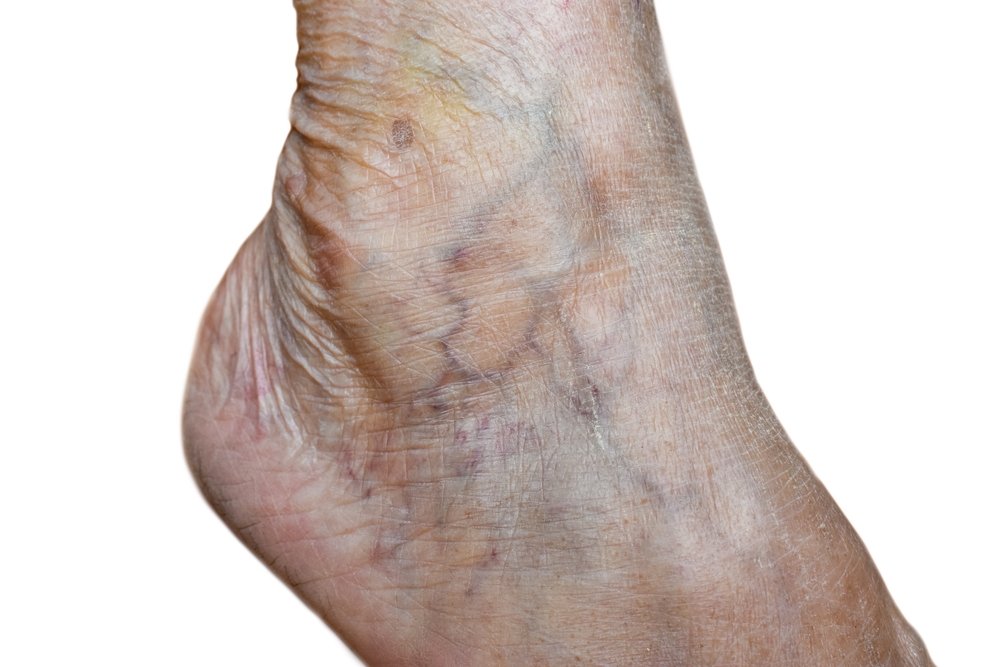 In the realms of health and fitness, where vibrant vitality often takes center stage, emerging concerns around discoloration and discomfort in lower limbs have garnered heightened attention. Among these, the phenomenon of purple lower legs stands as both a mystery and a widely experienced reality for many. Central to unraveling this puzzle is venous insufficiency, a condition intricately linked to the circulatory maladies behind this striking symptom.
In the realms of health and fitness, where vibrant vitality often takes center stage, emerging concerns around discoloration and discomfort in lower limbs have garnered heightened attention. Among these, the phenomenon of purple lower legs stands as both a mystery and a widely experienced reality for many. Central to unraveling this puzzle is venous insufficiency, a condition intricately linked to the circulatory maladies behind this striking symptom.
This guide endeavors not just to shed light on why your lower legs might turn a worrying shade of purple but also to explore venous insufficiency with the depth it demands. Aimed at health enthusiasts, medical professionals, and indeed anyone keen on understanding the intricacies of bodily wellness, what follows is a deep-dive into the physiological dynamics at play, preventative strategies, and treatment options.
The Phenomenon of Purple Lower Legs
Purple or bluish discoloration of the lower legs, often accompanied by swelling, pain, or a heavy sensation, could be indicative of underlying venous insufficiency. This condition stems from faulty valve functions in the veins, leading to improper blood flow back to the heart. The pooling of blood, primarily in the lower extremities, manifests externally as a distinct purple hue.
Causes and Risk Factors
Central to the conversation on venous insufficiency are the causes and risk factors that predispose individuals to this condition:
- Genetics: A family history of venous issues dramatically increases the likelihood of developing similar conditions.
- Age: Advancing age brings with it a natural degradation of vein elasticity and valve functionality.
- Lifestyle: Sedentary lifestyles, prolonged standing or sitting, and obesity are pivotal lifestyle factors.
- Pregnancy: Increased blood volume and hormonal shifts during pregnancy can exacerbate venous strain.
Symptoms to Watch For
While purple lower legs are a hallmark sign, they herald a broader spectrum of symptoms, encompassing:
- Swelling and heaviness in legs, especially after prolonged standing
- Itching or tingling sensations around affected areas
- Formation of varicose veins
- Skin ulcers or sores that heal slowly, if at all
Preventative Measures
Prevention, they say, is better than cure. In the context of venous insufficiency, adopting preventative measures can significantly stave off or mitigate the severity of symptoms:
- Stay Active: Regular exercise improves blood circulation. Focus on leg-centric activities like walking or cycling.
- Mind Your Posture: Avoid standing or sitting for prolonged periods. Elevate your legs when seated to facilitate blood flow.
- Optimize Your Diet: A diet rich in antioxidants and low in salt can prevent swelling and support vascular health.
- Wear Compression Socks: Especially recommended for those with a predisposition, compression socks can be immensely beneficial.
Treatment Options
Advancements in medical science have opened up a multitude of treatment pathways for those grappling with venous insufficiency:
- Medication: Medications can alleviate symptoms, improve blood flow, and prevent complications.
- Sclerotherapy and Laser Therapy: These treatments target and close off faulty veins, rerouting blood flow through healthier channels.
- Surgery: In severe cases, surgical intervention may be necessary to rectify the affected veins.
The Role of Vascular Consultation
Before venturing down any treatment route, it's crucial to consult with a Vascular Specialist. Our Vein & Vascular Specialist is Dr. Gulshan Sethi, a Board Certified Vascular Surgeon with 15+ years of experience. Diagnosis often involves ultrasound evaluations to map out blood flow and pinpoint inefficiencies in the venous system. To get evaluated, feel free to make an appointment with our Clinic by calling 516-606-7811 or Click Here.
Final Thoughts
The visage of purple lower legs, while undeniably concerning, offers an opportunity to deepen our understanding of venous insufficiency and its broader implications on health. By marrying this knowledge with proactive preventative measures and exploring treatment options under professional guidance, individuals can reclaim their comfort and confidence, stepping forward on a path to improved vascular health.
In a society increasingly invested in the holistic well-being of its constituents, conversations around such conditions are invaluable. They not only demystify common health aberrations but also foster a culture of informed vigilance and proactive care.
